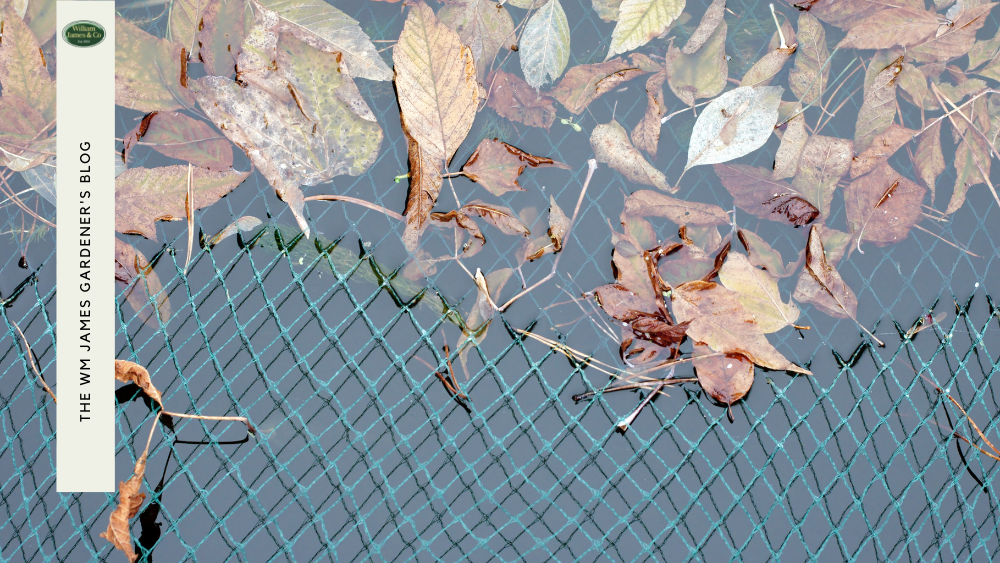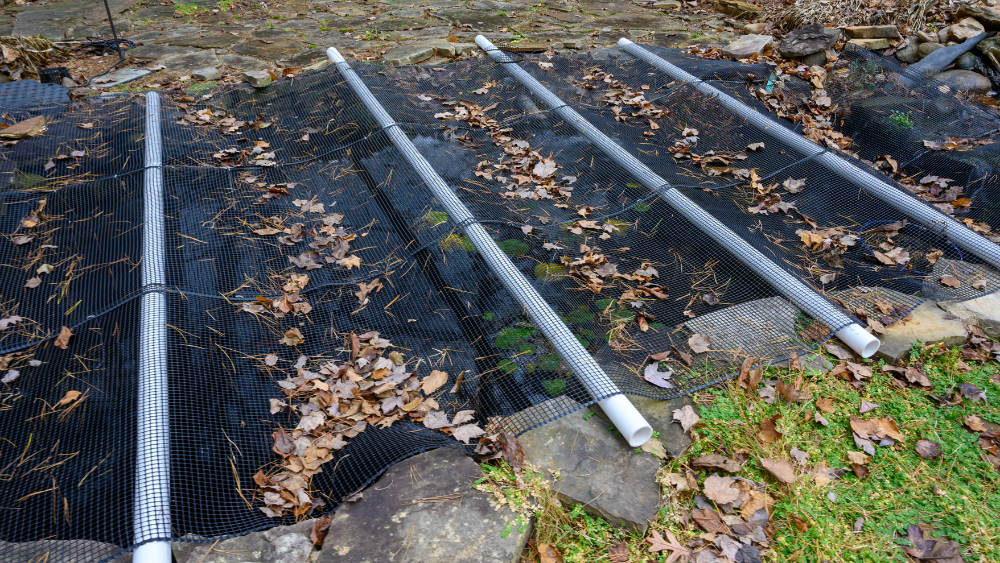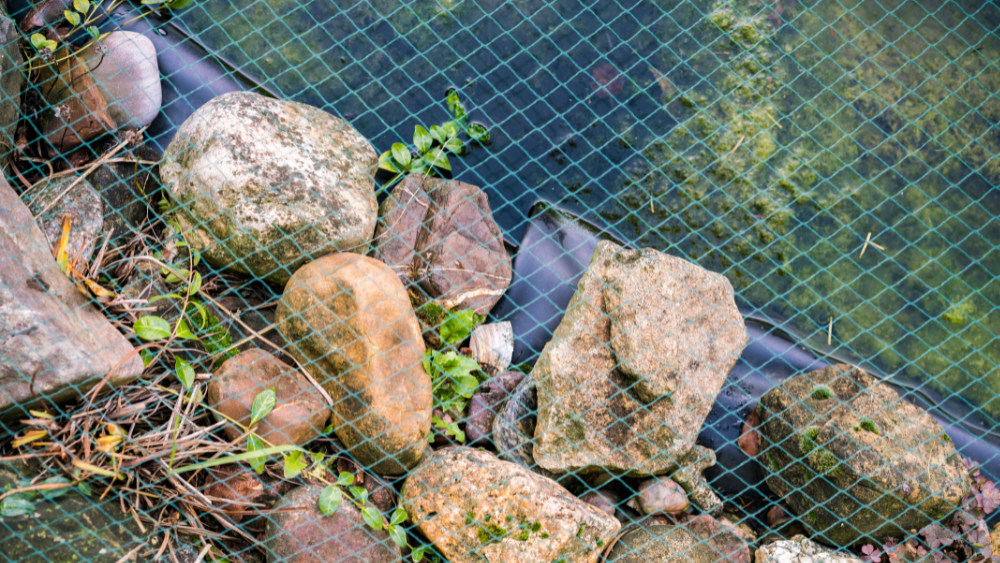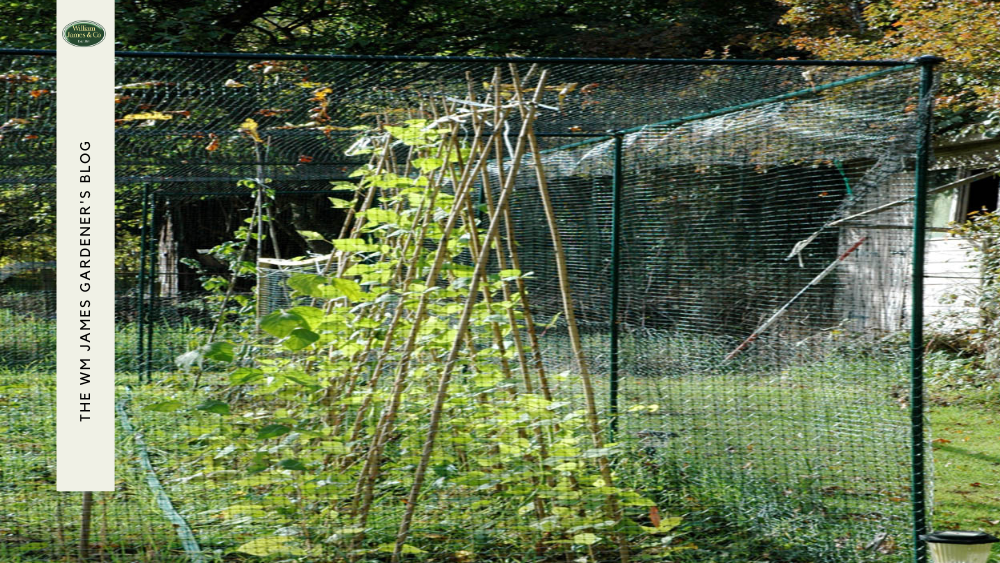We use cookies to make your experience better. To comply with the new e-Privacy directive, we need to ask for your consent to set the cookies. Learn more.
How Fish Pond Netting Can Protect Your Garden Feature
- Admin
- WM James Gardening Blog
- 6 Jul 2022
-
42views

If you're struggling to maintain your pond amid pesky bird predators and annoying falling leaves and need a helping hand, we at WM James have some pond netting ideas that'll save you all that annoyance!
After all, we are somewhat specialists in the garden netting space.
Pond netting can be used for protection both ways – to protect the body of water and any life (aquatic or other wildlife) within it, and also to protect the plants in your garden that surround the pond from unwanted visitors.
Factors like the time of year, the size of your pond, and what you’re trying to protect will determine exactly how to install your netting (as well as the sort of pond cover you should use).
So, without further ado, let's get into our useful ideas for pond netting in UK gardens. Helping you keep your pond serene and tranquil one step at a time.
In This Guide:
The Best Pond Netting & Covers
- Winter Pond Netting Ideas
- Spring Pond Netting Ideas
- Summer Pond Netting Ideas
- Autumn Pond Netting Ideas
Step-by-Step Guide to Installing Pond Netting
The Importance of Pond Netting
The Best Pond Netting & Covers
Pond netting comes in many different types with varying mesh sizes and twine diameters.
The mesh size is important because this it what stops debris or animals from getting through the net. It’s essentially the size of the holes in the netting. If you want to stop garden debris like leaves and twigs, a smaller mesh size will be needed.
| Season | Recommended Netting | Key Features |
|---|---|---|
| Winter | Thick Pond Safety Netting with 45mm mesh |
|
| Spring | Garden Netting with 20mm mesh |
|
| Summer | Heavy-Duty Pond Cover Netting with 50mm mesh |
|
| Autumn | Garden Netting with 20mm mesh |
|
Before deciding on what pond netting to get, it might be best to think about the seasons. Some seasons might need a slightly different level of protection compared with others. For example, in later winter/early spring, you'll want to watch out for herons, but in the winter, you need to consider snow and ice.
So, here's our ideas for keeping your pond safe all year round!
Winter Pond Netting Ideas
The temperature drop in the UK during winter can sometimes cause frosts, snow, and icy conditions. All of which you need to protect your pond from.
Thick, heavy-duty pond netting, installed at a slight angle to prevent snow or ice build-up (which can cause the net to break), would be the ideal solution.
We think this calls for our Thick Pond Safety Netting with 45mm Mesh. It's UV-stabilised and rot-proof for that extra longevity you need in the winter months.
It's strong enough to support one person standing on top of it, and if that’s not strong enough for the weather conditions, we don’t know what is.
This pond netting will also protect your inhabitants while keeping your water clear. Perfect.
Spring Pond Netting Ideas
Spring is the time of year when wildlife is becoming a little more active, coming out from their slumber. You'll also find spring plants shedding their leaves and petals, like blossom trees, introducing pollen into your pond, which isn't ideal for fish or pond plants.
So, of course, pond netting is needed to minimise predators and fallen debris entering your pond.
We recommend our Garden Netting with 20mm Mesh. The top-quality polypropylene is rot-proof, so you're covered from spring showers. It's super lightweight yet heavy-duty, perfect for allowing fish to roam around.
Golfers are coming back out of their winter break, so thankfully, our netting will even stop neighbouring goofballs from falling into your pond!
Summer Pond Netting Ideas
The summer pond is all about aesthetics (well, and keeping your pond safe), but naturally, you'll want to show it off.
For this, we recommend our Heavy-Duty Pond Cover Netting with 50mm Mesh simply because it's black, less obvious, and blends into the background whilst offering protection against water-loving birds.
That's not all the benefits, though. It's also UV-stabilised, so it's resistant to sun deterioration. The 50mm mesh is ideal for keeping out birds drawn to water too.
During the summer, we'd also recommend introducing some shade to your pond to reduce algae buildup. You could do this by adding plants, such as lily pads, to the water surface.
Autumn Pond Netting Ideas
In autumn, we really need to be aware of the leaf-falling situation because if you don't install netting, your pond will accumulate a lot of debris.
In the UK, autumn is also the time of year when the cold, wind, and rain will start to return, so you'll need something that can withstand those conditions.
For this season, we'd recommend the Garden Netting with 20mm Mesh. The material is heavy-duty, and the mesh is small enough to catch falling leaves before they land in your pond.
WM James nets are also made to order, so no matter what size area you're looking at covering, we'll have something for you.
Step-by-Step Guide to Installing Pond Netting
If you're worried about struggling with the installation of your net, don't worry. We've put together this helpful guide on setting up your net, so it works to its full potential and looks aesthetically pleasing.
#Step 1: Measure out your space, including any water features or surrounding rocks that may need to be covered, for your bespoke pond netting. It's best to add a buffer of about 10cm—just in case.
#Step 2: Order your netting, taking into account your pond's needs and the season.
#Step 3: Get trimming and cleaning. You'll want to start with a blank canvas, so make sure you trim any surrounding plants that could get in the way and remove any floating debris from the pond.
#Step 4: Place your pegs evenly around the pond to ensure your netting won't sag. You'll want to push these firmly into the ground.
#Step 5: Lay the net evenly over the pond, making sure it's taught over the pegs. You may need another person to help you with this, depending on how big your pond is. Secure in place using hooks and clips.
#Step 6: Trim any excess net to tidy up the appearance. You could also cover the edges with rocks or plants for a rustic look if that's more your style.
#Step 7: Well done, your net is now installed! All you need to do now is take a walk around the pond to make sure everything is taught and secure.
Maintaining Pond Netting
Due to our high-quality nets, you won't need to add too much to your pond maintenance list, but there are a few things worth keeping in mind when they look like they need a spruce-up.
Here are just a few things you need to watch out for:
- If your netting is beginning to look untidy, try to remove some debris and dirt it's managed to catch.
- If your net is starting to sag, it would be a good idea to pull the pegs from the ground and place them back in the ground a little further out to make your net tight again.
- You'll also need to check for wear and holes, which can be patched up with sturdy twine or even fishing wire.
Gardening Gifts for Beginners and Pros
The Importance of Pond Netting
- Protecting wildlife
- Protecting plants
- Keeping the water aerated
- Minimising fallen debris
Pond netting is a type of garden netting placed over a pond to help it thrive, especially if you have fish. Fish are creatures that, while you may think safe in the pond, are not always, and that's down to predators like birds and cats swiping in any chance they get.
With netting, you can protect the creatures inside the pond from predators, and plant life, which keeps the water aerated for the fish, from animals like ducks.
If you've spent a lot of money on fish and pond plants, you should consider getting a pond net. Not to mention the falling leaves and debris that a pond net can help protect from.
Gone are the days of spending time fishing out the unwanted bits. Pond netting will do it all for you.
Shop Our High-Quality Pond Netting
Summary: Our Pond Netting Solutions for You
Hopefully, you now understand the importance of pond netting and why your garden would greatly benefit from it.
You should also now have some pond netting ideas for the seasons. This way, you can spend less time worrying about your pond's welfare and more time enjoying other gardening activities like growing and pruning!
Did you know that we also make nets for various situations? So, if you need plant protection from insects, birds, and furry friends, we can help you there, too. There's no use in putting your hard work into something if a rabbit or pigeon will enjoy the benefits!
Protect your garden today with WM James! Shop our products below.
FAQs
How Do I Support My Pond Netting?
Use pegs to tie the net down and keep it taught and firm. If you feel you need to support it further, you can place decorative rocks and plants over the top of the pegs. This will ensure the net is firmly secured and will make your pond area look more vibrant.
Can Herons Get Through Pond Netting & to the Fish?
If it's not the right size or tension, then yes, herons can get through pond netting and to your fish. Thankfully, though, WM James' nets are all made to prevent herons from reaching your pond.
What Can I Use to Cover My Pond in the Winter?
You can use one of WM James' nets to cover your pond in the winter. This will protect your fish from predators and stop leaves and other debris from falling into your pond over the season.
If you don't have a heater and are worried about your fish in low temperatures, you may want to consider a more solid pond cover that traps heat.
Should I Cover My Garden Pond With a Net?
There are many benefits to using netting on your pond, some of which include:
- Preventing leaves and debris from falling in
- Protecting fish from predators
- Protecting plants from predators
- Keeping water aerated














